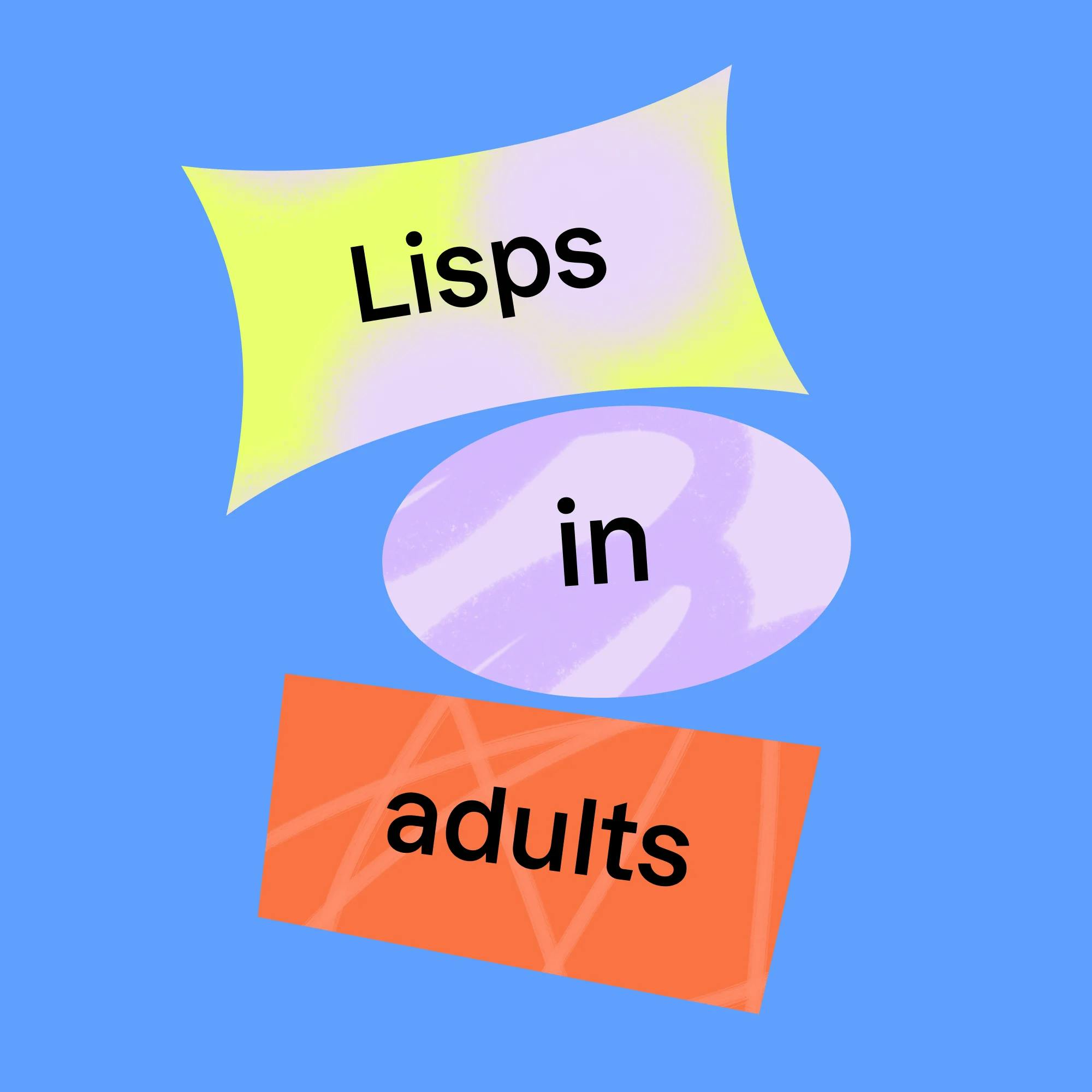My adult clients frequently ask…
“Is speech therapy just for kids?”
“Will speech therapy help me as an adult?”
“Is it too late to fix my lisp?”
Many of my adult clients never received speech therapy as a child. Now they’re seeking care from a speech-language pathologist to correct their lisp–whether it’s for professional reasons, to increase their confidence, or simply to improve how they communicate in everyday life. The good news is that it’s never too late to receive speech therapy for a lisp (or any other communication concern!).
Expert speech support for adults
If you'd like to improve your speech skills, we're here for you. Get matched with a licensed speech therapist today.
 Get started
Get startedWhat causes a lisp?
A lisp is an incorrect production of the /s/ and /z/ sounds. A lisp is caused by an incorrect motor pattern of tongue positioning and movement. When a person has a lisp, they’re positioning their tongue in a way that obstructs the airflow needed to make the /s/ and /z/ sounds. That distorted airflow creates the lisping sound.
The underlying reason for this incorrect tongue position isn’t always clear. Lisps can be caused by a variety of factors, including:
Learning to produce the /s/ and /z/ sounds incorrectly as a child
A jaw misalignment, or problems with a person’s jaw alignment
A tongue tie, which occurs when the tongue is attached to the bottom of the mouth and its movement is limited; this might lead to a lateral lisp
A tongue thrust, in which the tongue protrudes forward; this can also impact feeding and swallowing
How common is a lisp in adults?
There are many reasons adults may seek speech therapy. But it’s estimated that about 23% of people who receive speech therapy do so because of a lisp.
Lisping in adults is more common than many people think. In fact, lisps are actually some of the most common speech errors. One study found that in a sample size of almost 750 students, almost a quarter of these young adults (23.3%) had a lisp.


Are there different types of lisps?
There actually four different types of lisps:
1 Interdental lisp
An interdental lisp, sometimes called a frontal lisp, is the most commonly recognized lisp. This is where a [th] sound is produced instead of an /s/ or /z/ sound. If you have an interdental lisp, words like “salad” may be pronounced as “thalad,” and words like “zipper” may be pronounced as “thipper.” It's called an interdental lisp because these sounds are caused by incorrect placement of the tongue in the mouth, often protruding between the front teeth.

2 Dentalized lisp
A dentalized lisp is similar to the interdental lisp. While the tongue doesn’t completely protrude between the front teeth, it does push against the back of the front teeth, directing airflow forward. This can frequently cause a muffled sound when speaking.

3 Lateral lisp
A lateral lisp makes a very distinguishable sound once you know what to listen for. In this production, the tongue stays in a relatively correct position; however, the sides of the tongue are raised enough to cause air to escape from either side of the mouth. All of this extra air causes the speaker to sound “slushy,” and speech takes on a uniquely “wet” or “spitty” characteristic. In fact, you may even hear a lateral lisp referred to as the “slushy lisp.”

4 Palatal lisp
A palatal lisp occurs when the tongue raises up and touches the roof of the mouth, also called the soft palate. While this type of lisp is not as common, it can make it hard to pronounce the /s/ and /z/ sounds.
Claudia's story
With online speech therapy, Claudia got rid of a lisp she'd had since childhood--and learned to communicate with more confidence.
 Read Claudia's story
Read Claudia's storyDo I need speech therapy for my lisp?
Most adults are conscious of their speech and communication. However, the impact of their speech on their personal life and career varies across individuals. Lisping is not necessarily a negative! In fact, some adults celebrate their lisp. So, seeking speech therapy for a lisp must be something that a person is truly motivated to do. If you don’t want to change your speech, you don’t need speech therapy.
Lisping is not necessarily a negative! So, seeking speech therapy must be something that a person is truly motivated to do.
In some cases, a lisp is due to a language difference, not a disorder. A speech therapist must approach these cases with great cultural sensitivity. Again, we want to ensure that speech goals are coming from the client, not the speech therapist.
Some people may feel self-conscious about their lisp. They may believe their speech is interfering with their confidence, career, relationships, and life goals. If you feel motivated and drawn to learn tools and strategies to correct your lisp, then speech therapy is for you!
How a certified speech therapist can help you correct your lisp
A speech-language pathologist, also known as a speech therapist, can help both children and adults with a lisp. Through a detailed speech evaluation, the speech therapist can determine which type of lisp a person has: lateral, interdental, dentalized, or palatal. The speech therapist will then create a specific, personalized program to help target placement of the tongue. A lisp can be corrected at any age!
The goal of speech therapy for a lisp is to train the positioning of the tongue muscles to produce a clear /s/ and /z/ sound. Your speech therapist will teach you different techniques and strategies to position your tongue and show you how to practice throughout the week, outside of your speech therapy sessions. Treatment may also focus on other speech sounds or other goals, such as public speaking, accent modification, and/or voice therapy, depending on the person’s wants and needs.
The goal of speech therapy is to train the the tongue muscles to produce a clear /s/ and /z/ sound.
Adults with busy schedules often find that online speech therapy is a smart choice. You can work one-on-one with a speech therapist from the comfort of your home, on a day and time that’s convenient for you–without having to commute to appointments.
Speech therapy is a medical necessity for many people, but it can also be a form of self-care. If your lisp impacts your quality of life, your confidence, and your professional growth, you are worth the investment!
How Expressable Can Help
Concerned your child isn't reaching age-expected milestones? Looking for communication support from a professional? Expressable is a national online speech therapy practice serving children and adults. We treat all major areas of communication and feeding, offer flexible hours including evenings and weekends, and accept most major health insurance plans. We’re proud to have earned more than 3,000 5-star reviews from our clients (4.9/5 average).
Our therapy model is centered on parent and caregiver involvement. Research proves that empowering caregivers to participate in their loved one’s therapy leads to better outcomes. That’s why we combine live, 1-on-1 speech therapy with personalized education and home practice activities for faster progress.
Communication is more than words. It’s how we share how we feel and show who we are. We’re here to help you or your child do just that.

 Heather Gross, M.S., CCC-SLP
Heather Gross, M.S., CCC-SLP













